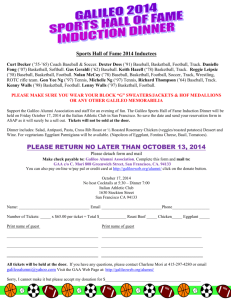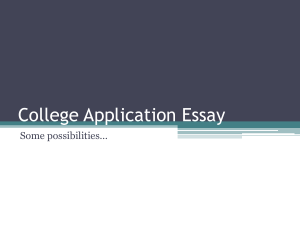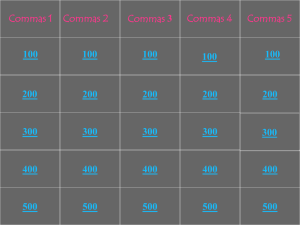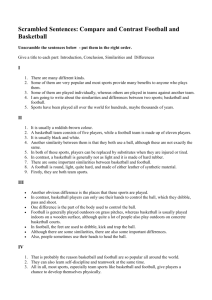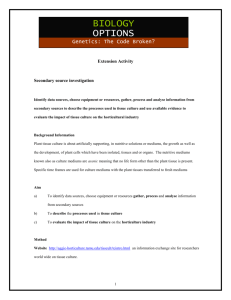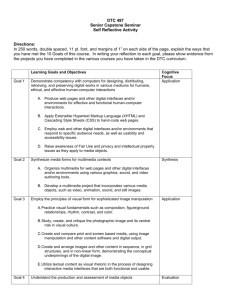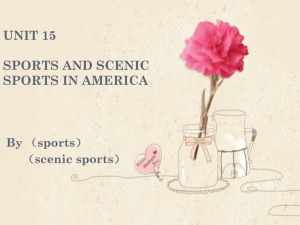Assessment Rigor Analysis
advertisement
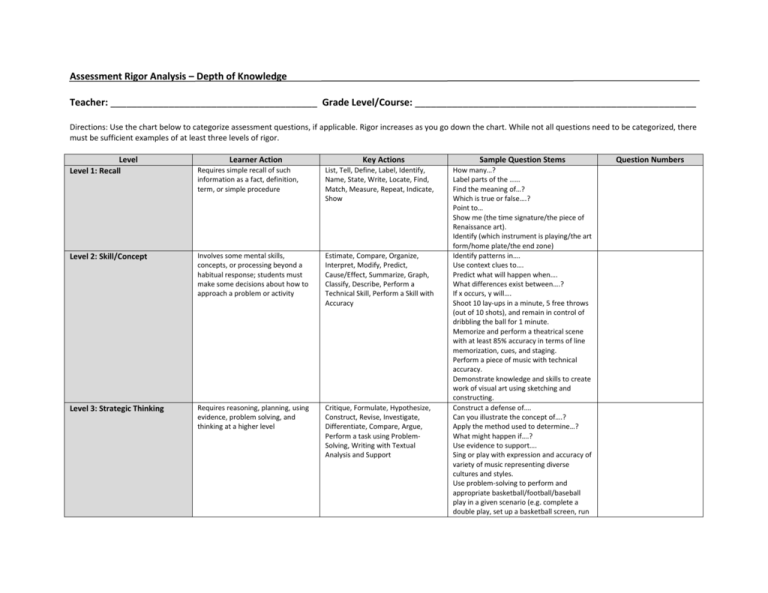
Assessment Rigor Analysis – Depth of Knowledge Teacher: _______________________________________ Grade Level/Course: _____________________________________________________ Directions: Use the chart below to categorize assessment questions, if applicable. Rigor increases as you go down the chart. While not all questions need to be categorized, there must be sufficient examples of at least three levels of rigor. Level Level 1: Recall Learner Action Key Actions Requires simple recall of such information as a fact, definition, term, or simple procedure List, Tell, Define, Label, Identify, Name, State, Write, Locate, Find, Match, Measure, Repeat, Indicate, Show Level 2: Skill/Concept Involves some mental skills, concepts, or processing beyond a habitual response; students must make some decisions about how to approach a problem or activity Estimate, Compare, Organize, Interpret, Modify, Predict, Cause/Effect, Summarize, Graph, Classify, Describe, Perform a Technical Skill, Perform a Skill with Accuracy Level 3: Strategic Thinking Requires reasoning, planning, using evidence, problem solving, and thinking at a higher level Critique, Formulate, Hypothesize, Construct, Revise, Investigate, Differentiate, Compare, Argue, Perform a task using ProblemSolving, Writing with Textual Analysis and Support Sample Question Stems How many…? Label parts of the …… Find the meaning of…? Which is true or false….? Point to… Show me (the time signature/the piece of Renaissance art). Identify (which instrument is playing/the art form/home plate/the end zone) Identify patterns in…. Use context clues to…. Predict what will happen when…. What differences exist between….? If x occurs, y will…. Shoot 10 lay-ups in a minute, 5 free throws (out of 10 shots), and remain in control of dribbling the ball for 1 minute. Memorize and perform a theatrical scene with at least 85% accuracy in terms of line memorization, cues, and staging. Perform a piece of music with technical accuracy. Demonstrate knowledge and skills to create work of visual art using sketching and constructing. Construct a defense of…. Can you illustrate the concept of….? Apply the method used to determine…? What might happen if….? Use evidence to support…. Sing or play with expression and accuracy of variety of music representing diverse cultures and styles. Use problem-solving to perform and appropriate basketball/football/baseball play in a given scenario (e.g. complete a double play, set up a basketball screen, run Question Numbers Level 4: Extended Thinking Requires complex reasoning, planning, developing, thinking, designing, creating, and evaluating, most likely over an extended time. Cognitive demands are high, and students are required to make connections both within and among subject domains. Student may use or perform a variety of methods or mediums to convey complex ideas or solve problems. Design, Connect, Synthesize, Apply, Critique, Analyze, Create, Prove, Evaluate, Design, Create and Perform Complex Performance or Project-Based Assessment Tasks the spread offense for a first down). Demonstrate knowledge and skills to create 2- and 3- dimensional works and time arts. Design x in order to…. Develop a proposal to…. Create a model that….. Critique the notion that…. Evaluate which tools or creative processes are best for x theatre or musical production. Create and perform a complex work of art using a variety of techniques, technologies and resources and independent decision making. Perform a complex musical piece with a high level of expression and accuracy. Design and perform a complex basketball or football play appropriate for a given situation. Evaluate and perform various offensive plays or movements in a basketball/football/baseball game, based upon the defensive scenario. Evaluate the use of various mediums to communicate ideas and construct 2 and 3 dimension works for art using these mediums. Adapted from: Webb, Norman L. and others. “Web Alignment Tool” July 24, 2005. Wisconsin Center for Educational Research. University of Wisconsin-Madison. February 24, 2006. http://www.wcer.wisc.edu/WAT/index.aspx and UW Teaching Academy http://teachingacademy.wisc.edu/archive/Assistance/course/blooms.htm.


